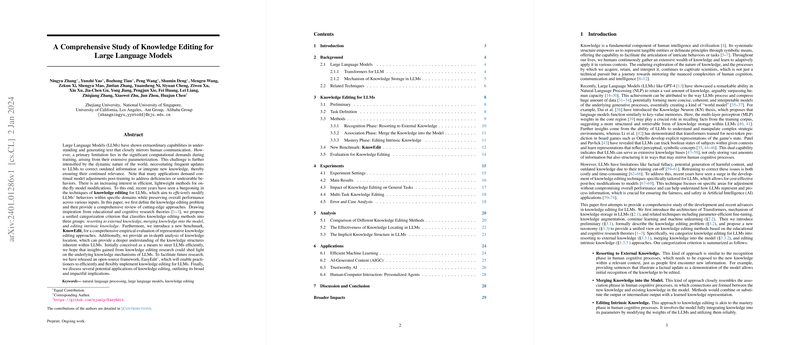Introduction to Knowledge Editing
LLMs have become a cornerstone in the field of NLP, capable of storing and manipulating vast amounts of data and closely imitating intricate human communication. Despite these successes, LLMs need to be continually updated with new knowledge due to the fluid nature of information. Frequent, computationally expensive retraining presents a challenge. Therefore, the field has seen a growing interest in efficient, lightweight modifications through knowledge editing, which aims to finetune LLMs in specific aspects without disturbing their general performance.
Transformative Architecture
The Transformer, a model intrinsic to LLMs, employs self-attention mechanisms and fully connected feed-forward networks within an encoder-decoder framework. This design enables effective sequence processing and integration of contextual information. The Transformer has vastly improved the performance of NLP tasks and inspired numerous research endeavors to probe the potentials of LLMs. Studies have suggested frameworks such as the existence of "Knowledge Neurons" and methods like "causal tracing" to decode how knowledge is stored within the layers of LLMs, contributing to the advancements in understanding these complex machine learning architectures.
Categorizing Knowledge Editing Techniques
Knowledge editing is classified into three avenues, drawing parallels to human cognitive processes: resorting to external knowledge, merging knowledge into the model, and editing intrinsic knowledge. Each method aims to align new knowledge with the LLM's existing structure; from initial recognition to deeper integration where the model parameters themselves are modified. The paper proposes KnowEdit, a benchmark to evaluate these knowledge editing strategies. Additionally, the research explores knowledge location analysis, emphasizing the importance of understanding the specific aspects of LLMs that contribute to their knowledge structures and behavior when processing information.
Applications and Broad Impacts
The practical applications of knowledge editing are vast, impacting areas such as efficient machine learning, AI-generated content, trustworthiness in AI systems, and enhanced human-computer interaction. The paper discusses broader impacts like energy consumption and interpretability, critical for future advancements in AI efficiency and adoption. In a broader sense, knowledge editing does not only solve immediate practical problems but also provides insights into the fundamental mechanisms of knowledge storage and retrieval within AI models, with the potential to inform future AI systems more reflective of nuanced human cognition.
